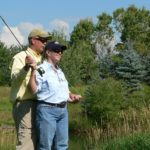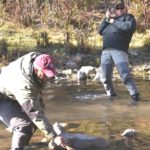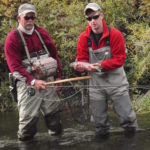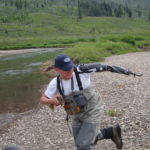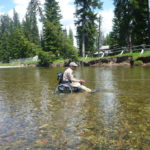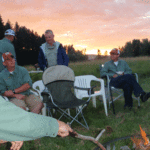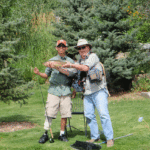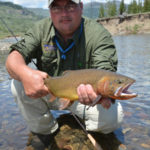
Recently, I had the opportunity and privilege to attend the annual induction ceremony for the International Game Fish Association Hall of Fame. I am ashamed to say that I have not attended many of these and somewhat selfishly attend only those where I personally know one or more of the inductees. All of those considered and ultimately inducted have contributed to the sport that we are so enthusiastic about. Almost all of them have a very strong conservation ethic.
While I did personally know several of those being inducted, I was there to celebrate the induction of Frank Woolner. Frank was the editor of Salt Water Sportsman when I first went to work there in the early 1970’s. As someone who has read the magazine since I was able to read, I saw Frank as a god-like figure. While I remained in awe for quite a while, I soon learned that like the rest of us, he put his pants on one leg at a time. Simply meaning, he was mortal. Frank and Hal Lyman, the publisher, were both well-respected names in the sport fishing world. Hal was inducted into the IGFA Hall of Fame a number of years ago.
Much about those early days at the magazine are a blurr, but my first day will remain etched in my brain forever. Frank, with his beret at a jaunty angle and pipe clenched in his teeth, sauntered into the office with cheerful hellos to the office staff. He often brought them chocolates from a local shop. While genuinely generous, he also wanted to keep the people who wrote the paychecks happy. He rounded the corner, looked at me and tossed a large manila envelope on my desk. “Take a look at these rejection letters and you’ll get an idea of how to write them!” he said as he disappeared into Hal Lyman’s office.
The very first rejection letter was to a writer that I happened to know, but whose name I’ll keep to myself. It read, “Dear XXX, This is the worst blankingmanuscript I have ever read. P.S. Sorry to see that your camera got dunked in salt water.” (The photos were horribly blurry and I can assure you that Frank did not say “freaking”.) I just about fell out of my seat laughing.
Frank mentored more up-and-coming outdoor writers than anyone else. He had a great knack for stringing together just the right words and an ability to quietly teach. This was surprising for someone who did not have a high school education. Frank did have a photographic memory. He read constantly and could recite almost any poetry asked of him. I tried it a couple of times by starting poems that he would finish without blinking an eye, while I knew only the first few lines.
Both Frank and Hal were way ahead of the times in the efforts to get anglers to be conscious of the impact they had as users of the resource. They came up with such slogans as “Limit your catch, don’t catch your limit” and “Release today for fishing tomorrow.” That was back in the 1960’s. Frank also came up with the term for the standard grip and grin photo of the day. It was a “Dead fish, dumb fisherman” photo.
In the Hall of Fame, when you see Frank’s Royal typewriter, his Calcutta surf rod and Penn Squidder reel filled with early braided line, you see how far we have come since those pioneer days. Tackle and techniques have advanced to a point that would be unrecognizable to many of those pioneers, but the one thing that has not changed is the love of the sport. We always need to follow in their footsteps, be cognizant that we do have an impact, and conserve our resources for those who will follow.




